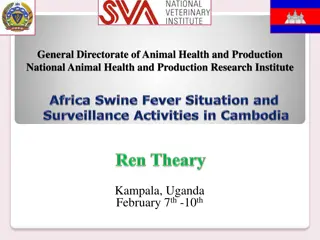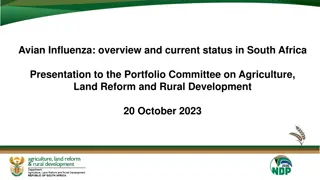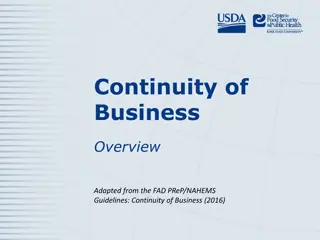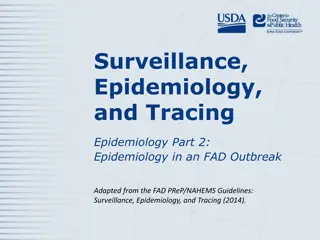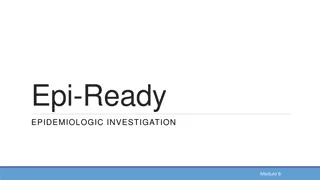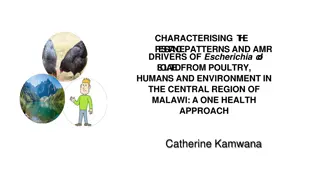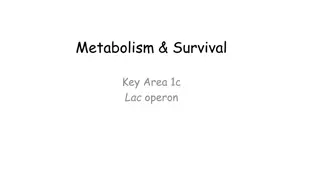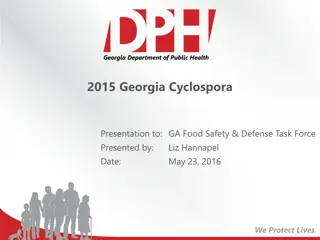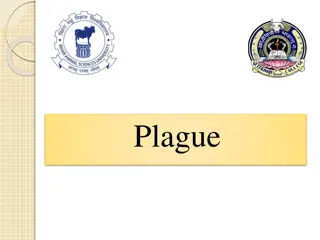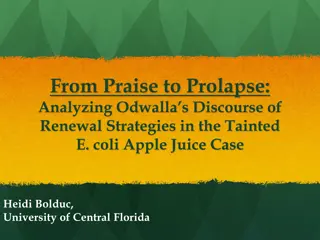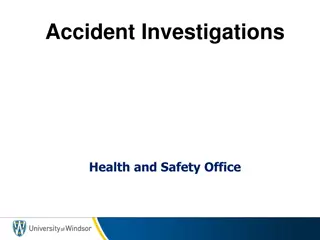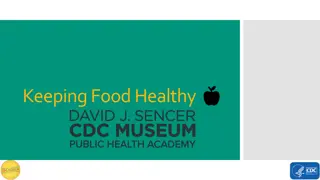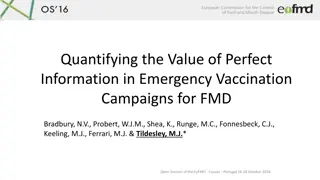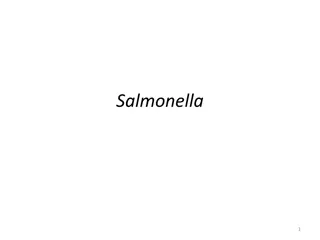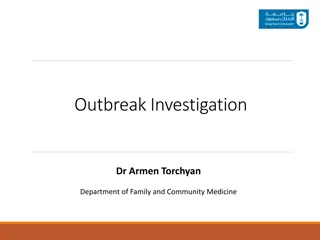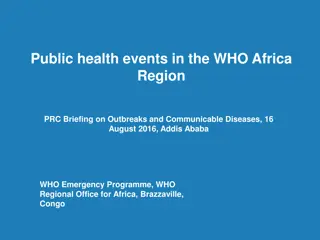Understanding E. coli O157:H7 Outbreaks and Investigations
Explore the characteristics, pathotypes, serotypes, and lifestyle of E. coli O157:H7, a dangerous pathogen responsible for outbreaks linked to various food sources. Discover its growth conditions, toxins, symptoms, and ways it contaminates food, leading to public health concerns and investigations.
Download Presentation

Please find below an Image/Link to download the presentation.
The content on the website is provided AS IS for your information and personal use only. It may not be sold, licensed, or shared on other websites without obtaining consent from the author. Download presentation by click this link. If you encounter any issues during the download, it is possible that the publisher has removed the file from their server.
E N D
Presentation Transcript
1 Shiga toxin Escherichia coli and Shigella sp.
Characteristics of E. coli 2 Enterobacteriaceae Gram negative rod, ~ 1 m in length. Facultative anaerobe Non-spore-forming. All ferment glucose. Most ferment lactose to gas. Most are motile. Image:Flagella.png
Growth and survival 3 pH range Temperature range Water activity Indicator organism
Other E. colipathogens (pathotypes) 4 Commensal E. coli Intestinal: Enterotoxigenic E. coli (ETEC) Enteropathogenic E. coli (EPEC) Enteroaggregative E. coli (EAEC) Enteroinvasive E. coli (EIEC) Diffusely adherent E. coli (DAEC) Enterohemorrhagic E. coli (EHEC) E. coli O157:H7
Serotypes 5 O-antigen Somatic antigen >170 known H-antigen Flagellar antigen >60 known Image:Flagella.png E. coli O157:H7 Images from Dr. Erika A. Taylor s website
Enterohemorrhagic E. coli O157:H7 6 Birth of a pathogen Toxin (Shiga toxin) Disease: Infectious dose Incubation period Symptoms Progression Cases per year Typical food sources Other sources
Carcass washer 8 ?
Outbreaks 9 Ground beef Unpasteurized apple juice Spinach and other leafy vegetables Public drinking water (Walkerton, Ontario) Sprouts (1996 Osaka, Japan outbreak) Raw chocolate chip cookie dough (Nestle outbreak) Raw milk cheese (Costco) Petting zoos
Apple cider 10 Oct-Dec 1991, 23 patients (mean age 10.8) admitted to Boston area hospitals Symptoms: diarrhea (96%), abdominal pain (87%), bloody diarrhea (70%), vomiting (35%), fever (17%) Clinical confirmed E. coli O157:H7
The investigation 11 What caused the outbreak? What are potential ways E. coli O157:H7 ends up on apples? The resolution What new policies came out of this outbreak? An increased awareness of survival of E. coli O157:H7 in acidic environments. http://bites.ksu.edu/fresh-juice- outbreaks
Newly recognized pathogens 12 Non O157 Shiga toxin E. coli (non-O157 STEC) Serogroups O26, O45, O111, O103, O121, O145 Typically less virulent Collectively, about twice as common as O157:H7 Outbreaks (http://www.outbreakdatabase.com/) 2014: O121 raw sprouts from Evergreen Fresh Sprouts 2012-2013: O121 Frozen snack items (Rich Products) 2012: O145 no source identified 2012: O26 raw sprouts at Jimmy John s
13 Adulterant
Shigella sp. 14 Four species S. dysenteriae (group A) S. flexneri (group B) S. boydii (group C) S. sonnei (group D) About 130,000 cases/year (CDC, 2011); 30% foodborne (5th most common)
Similarity to STEC 15 Shigella is a fancy name for E. coli S. dysenteriae produce Shiga toxin pH, temperature, aw optimum Clinical presentation Low infectious dose 1-7 day incubation period; 3 days typical Dysentery
Differences with STEC 16 Most are non-motile and lactose-negative Humans are only known reservoir Year Outbreak Species 1987 Rainbow Family gathering; ~6,000 ill S. sonnei 1990 Operation Desert Shield; 214 soldiers (produce) Mostly S. sonnei 1991 Moose soup served at community event in Galena, Alaska; 25 ill S. sonnei 1994 SS Viking Serenade cruise ship; ~586 ill (onions) S. flexneri 2001 Tomatoes distributed to NY restaurants; 800 ill S. flexneri



